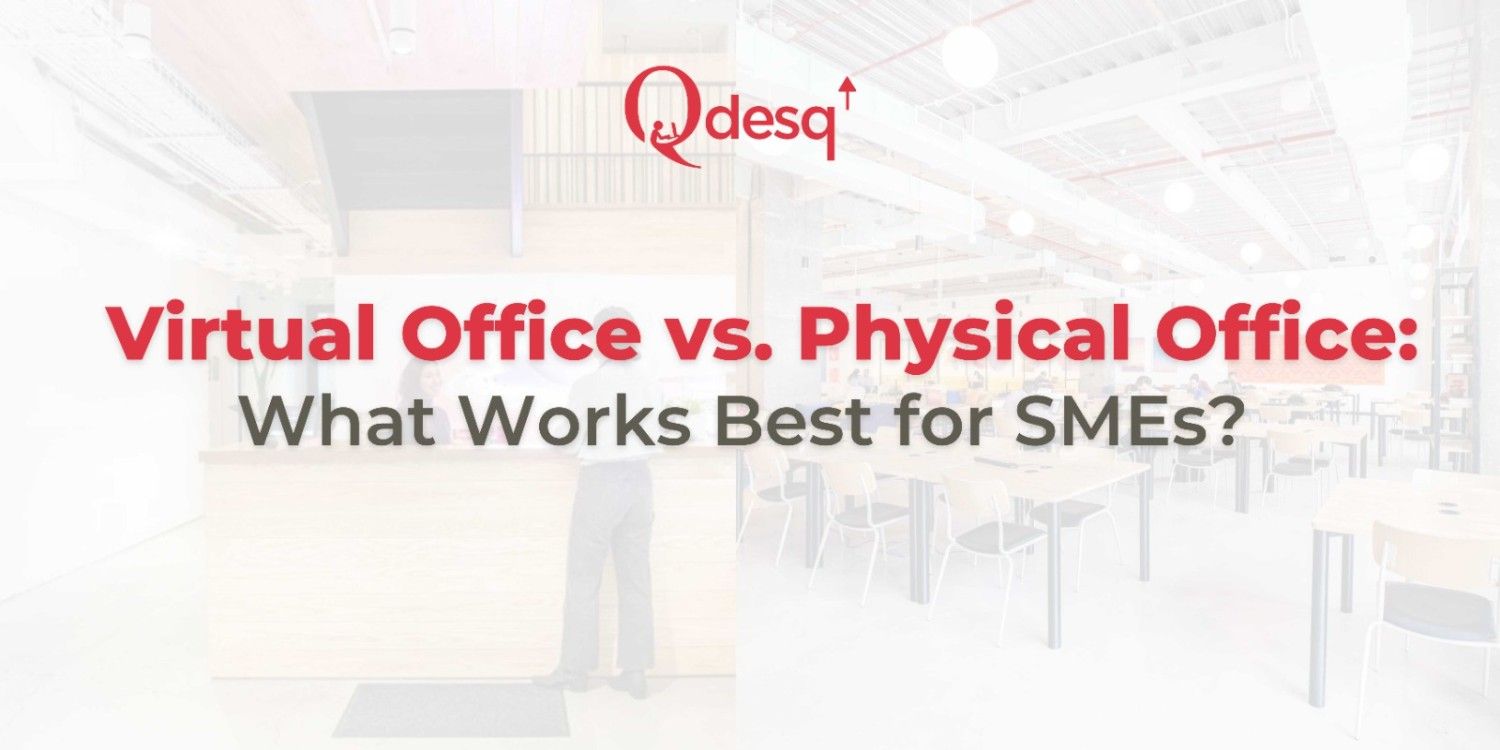In today’s rapidly changing business world, small and medium-sized enterprises (SMEs) face important choices about where and how to run their operations. One of the biggest decisions is whether to have a virtual office or a physical office. Both have their unique advantages, and picking the right one can impact everything from costs to team productivity. Let’s break down what each option offers and help you figure out what’s best for your SME.
What is a Virtual Office?
A virtual office gives SMEs a professional business address, mail handling, phone answering, and other support services without needing a physical workspace. It allows business owners and employees to work from anywhere, offering flexibility while keeping overheads low.
What is a Physical Office?
A physical office is a traditional workplace where employees come together daily. It’s a space with desks, meeting rooms, and all the infrastructure that supports in-person collaboration and shared company culture.
Why Virtual Offices Work for SMEs
- Save on Costs: Virtual offices cut expenses by removing rent, utility bills, and maintenance costs. This lets businesses invest more in growth areas like marketing or talent.
- Professional Address: You get a prestigious location for your business without the big price tag, which builds trust with clients and partners.
- Flexibility: Employees can work from anywhere. This freedom boosts job satisfaction and productivity.
- Support Services: Services like mail handling and dedicated phone answering help maintain a polished image without extra hassle.
- Easy to Scale: As your business grows or changes, you can adjust your virtual office services quickly without committing to a long lease.
- Eco-Friendly: Less commuting means a smaller carbon footprint, which is better for the planet.
- Access to global talent means you aren’t restricted by location and can hire the best people, no matter where they are in the world.
Why Physical Offices Still Matter
- Stronger Collaboration: Face-to-face interaction speeds up decision-making and builds stronger relationships.
- Routine and Structure: Having a dedicated workspace helps employees separate work from home life and stay focused.
- Client Interaction: Some clients prefer meeting in person, which is easier in a physical office.
- Company Culture: Physical offices naturally cultivate team spirit and a sense of community.
Which is Right for Your SME?
The right choice depends on your business model, budget, and goals.
- If keeping costs down and staying flexible are top priorities, especially for startups or growing businesses, virtual offices offer a practical, efficient solution.
- If your work depends heavily on collaboration, in-person meetings, or building a close-knit culture, a physical office may serve you better.
Embracing a Hybrid Model
Many small and medium-sized businesses find the right mix by using a hybrid approach: they handle daily tasks and remote work from virtual offices, but still use coworking spaces or meeting rooms for in-person meetings when necessary. This setup offers flexibility while keeping things professional.
Final Thoughts
There’s no one-size-fits-all answer when it comes to choosing between a virtual and a physical office for SMEs. Virtual offices bring down costs, boost flexibility, and support remote teamwork, making them ideal for many businesses today. Physical offices, though more costly, foster direct communication and stronger team culture — factors that remain important for certain companies.
Finding the right workspace solution is crucial as you grow and adapt. Platforms like Qdesq make it easier for SMEs to find and book virtual offices, coworking spaces, meeting rooms, and managed offices across India, helping you access professional setups that fit your unique needs and budget.











